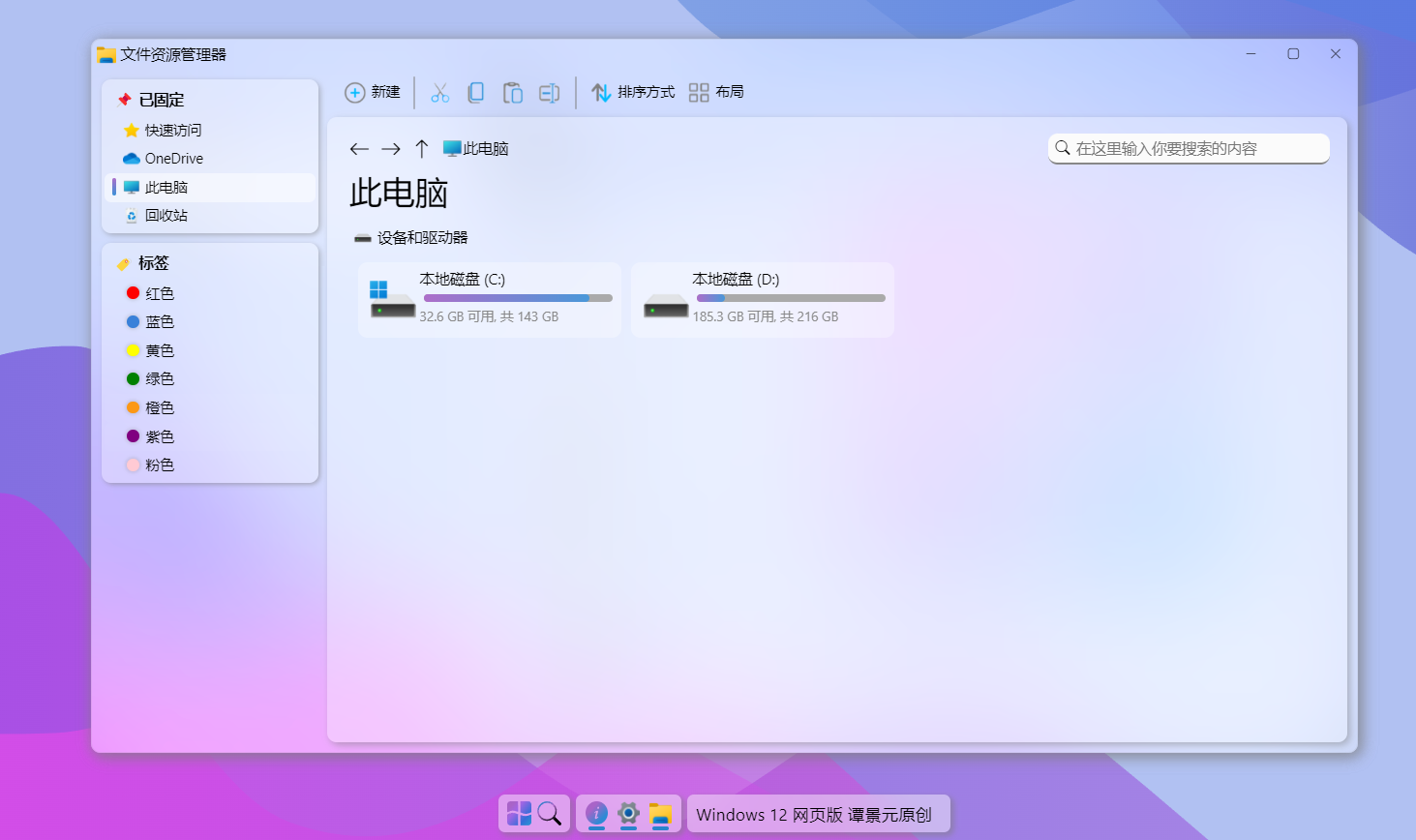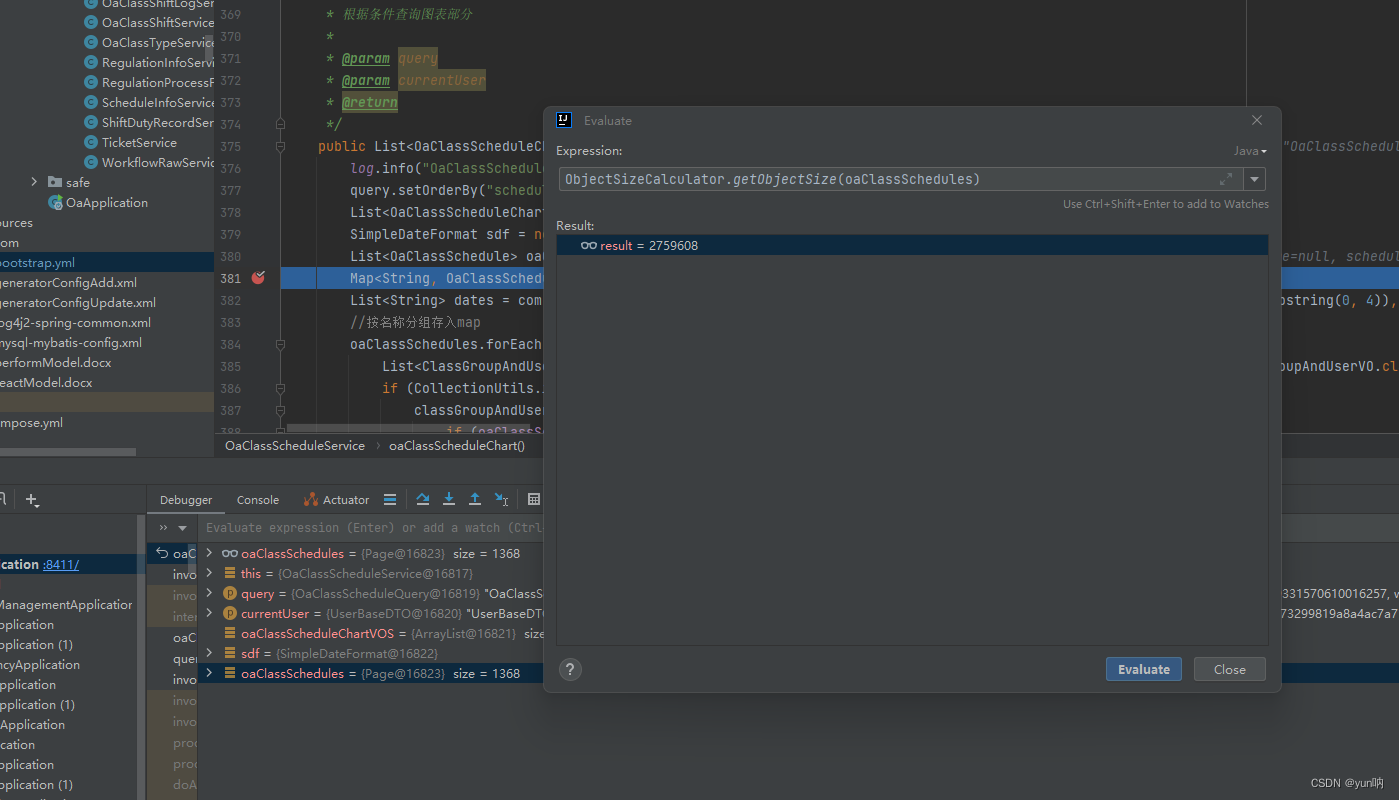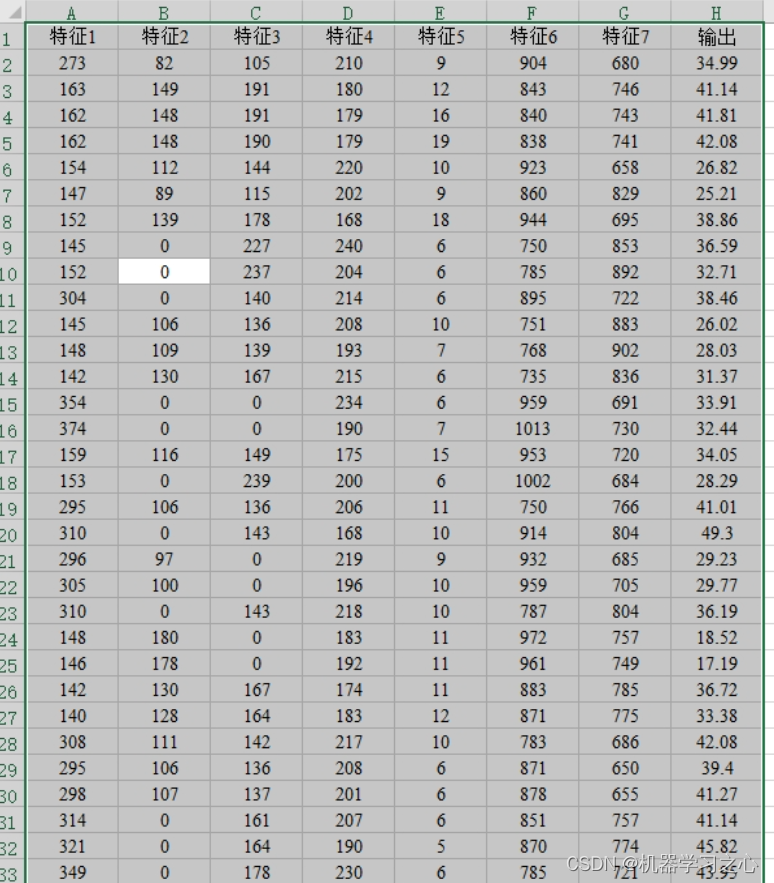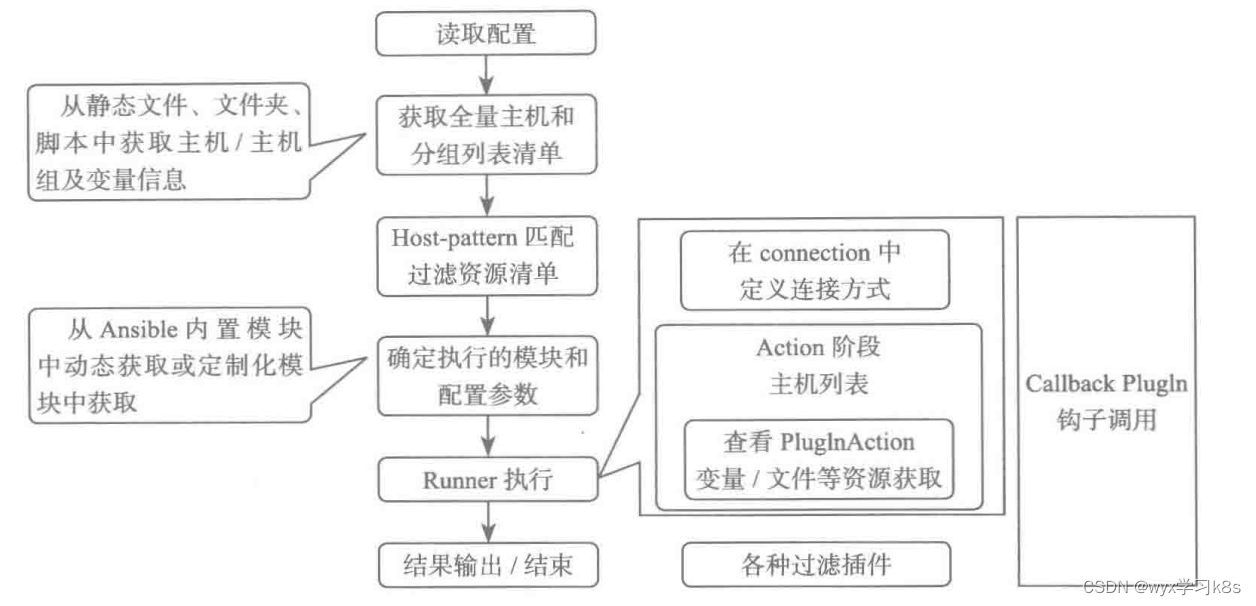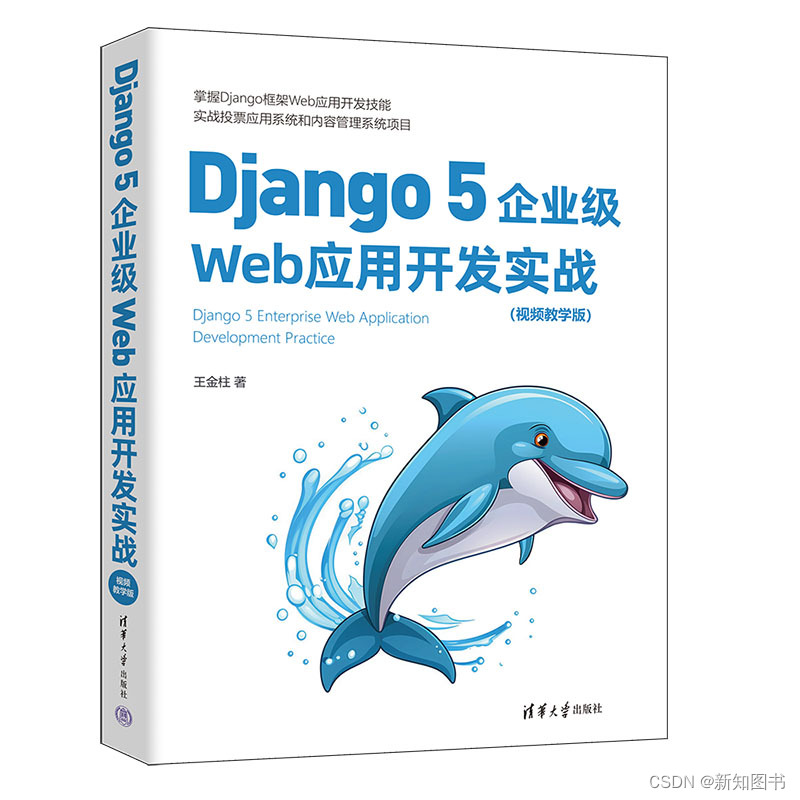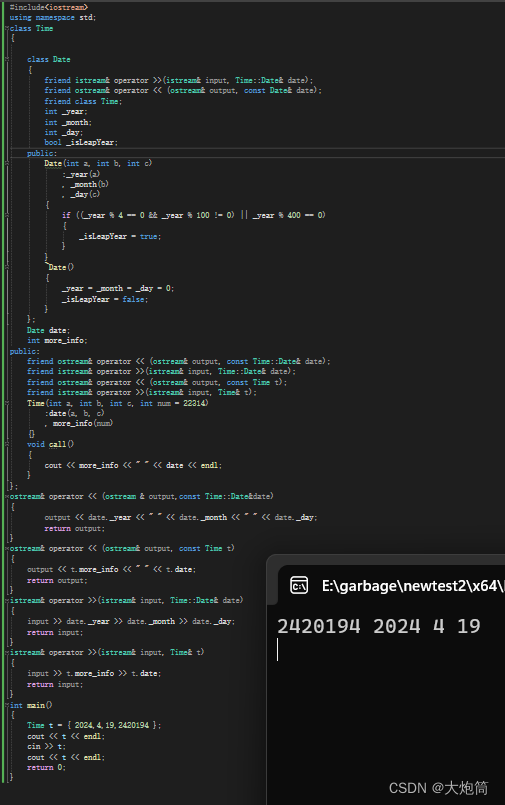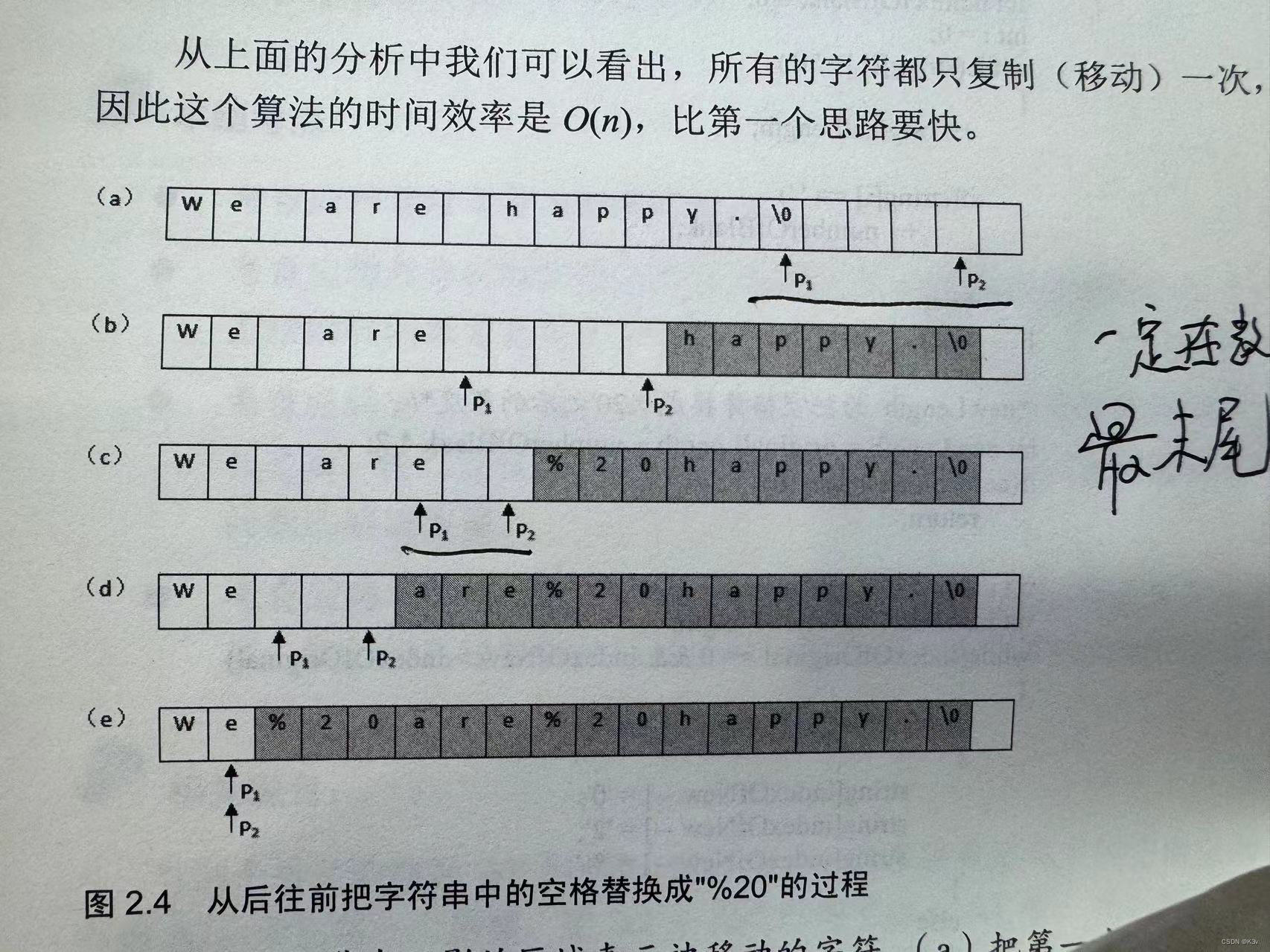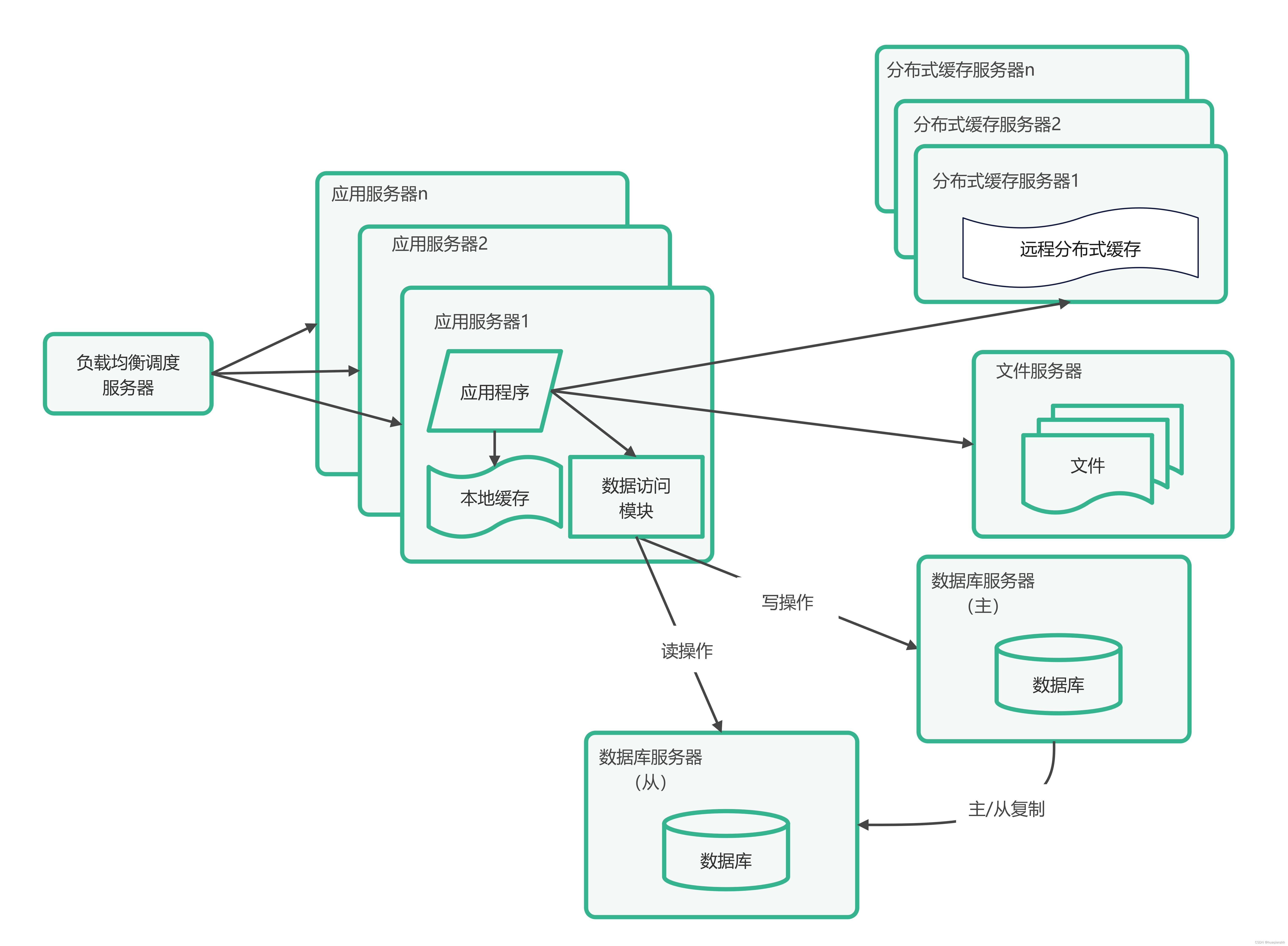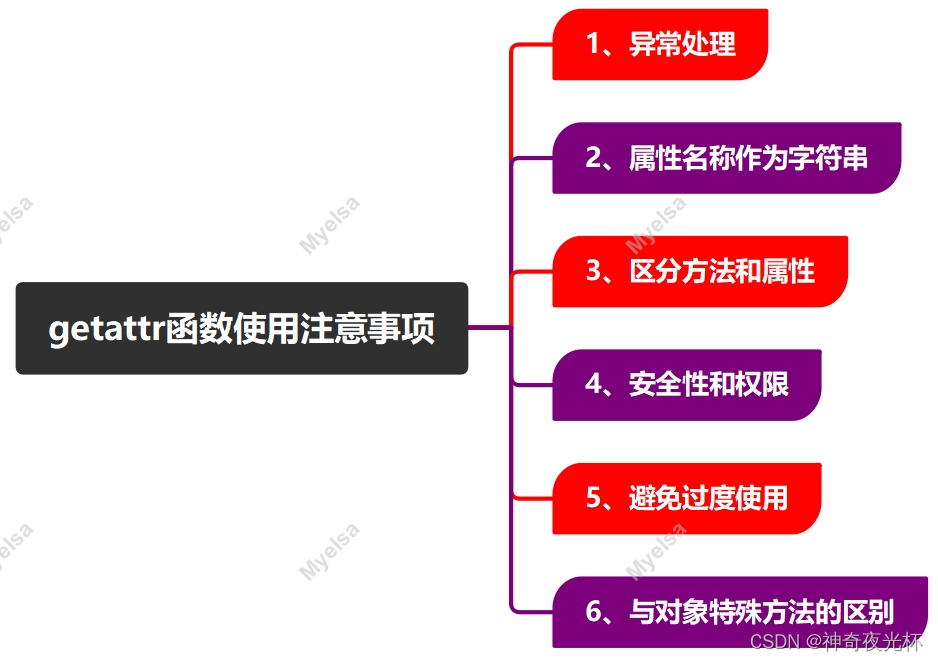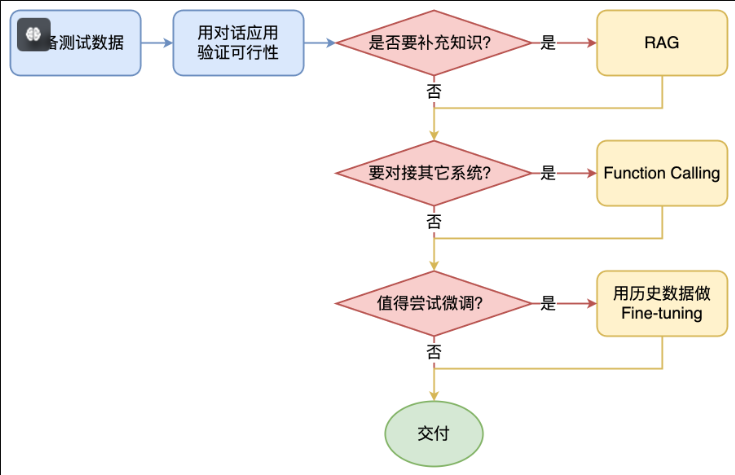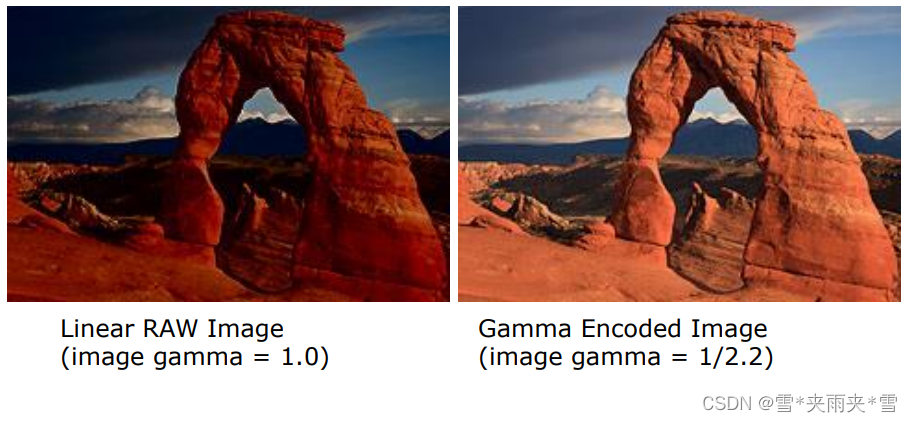文件:
1
什么是文件:
文件,对我们并不陌生,文件是保存数据的地方,比如大家经常使用的word文档,txt文件,excel文件.….都是文件。它既可以保存一张图片,也可以保持视频,声音..
.2
文件流:

常用的文件操作:
1
创建文件对象相关构造器和方法

应用案例演示:
请在e盘下,创建文件news1.txt、news2.txt、news3.txt,用三种不同方式创建
/**
*
* 演示创建文件
*/
public class FileCreate {
public static void main(String[] args) {
}
//方式 1 new File(String pathname)
@Test
public void create01() {
String filePath = "e:\\news1.txt";
File file = new File(filePath);
try {
file.createNewFile();
System.out.println("文件创建成功");
} catch (IOException e) {
e.printStackTrace();
}
}
//方式 2 new File(File parent,String child) //根据父目录文件+子路径构建
//e:\\news2.txt
@Test
public void create02() {
File parentFile = new File("e:\\");
String fileName = "news2.txt";
//这里的 file 对象,在 java 程序中,只是一个对象
//只有执行了 createNewFile 方法,才会真正的,在磁盘创建该文件
File file = new File(parentFile, fileName);
try {
file.createNewFile();
System.out.println("创建成功~");
} catch (IOException e) {
e.printStackTrace();
}
}
//方式 3 new File(String parent,String child) //根据父目录+子路径构建
@Test
public void create03() {
//String parentPath = "e:\\";
String parentPath = "e:\\";
String fileName = "news4.txt";
File file = new File(parentPath, fileName);
try {
file.createNewFile();
System.out.println("创建成功~");
} catch (IOException e) {
e.printStackTrace();
}
}
//下面四个都是抽象类
//
//InputStream
//OutputStream
//Reader //字符输入流
//Writer //字符输出流
}
2
获取文件的相关信息:
getName, getAbsolutePath, getParent, length, exists, isFileisDirectory

应用案例演示:
如何获取到文件的大小,文件名,路径,父File,是文件还是目录(目录本质也是文件,一种特殊的文件),是否存在.
import org.junit.jupiter.api.Test;
import java.io.File;
public class FileInformation {
public static void main(String[] args) {
}
//获取文件的信息
@Test
public void info() {
//先创建文件对象
File file = new File("e:\\news1.txt");
//调用相应的方法,得到对应信息
System.out.println("文件名字=" + file.getName());
//getName、getAbsolutePath、getParent、length、exists、isFile、isDirectory
System.out.println("文件绝对路径=" + file.getAbsolutePath());
System.out.println("文件父级目录=" + file.getParent());
System.out.println("文件大小(字节)=" + file.length());
System.out.println("文件是否存在=" + file.exists());//T
System.out.println("是不是一个文件=" + file.isFile());//T
System.out.println("是不是一个目录=" + file.isDirectory());//F
}
}
目录的操作和文件删除:

IO 流原理及流的分类:
1 Java IO
流原理:
1.l/O是Input/Output的缩写,I/0技术是非常实用的技术,用于处理数据传输。如读/写文件,网络通讯等。2.Java程序中,对于数据的输入/输出操作以”流(stream)”的方式进行。3. java.io包下提供了各种“流”类和接口,用以获取不同种类的数据,并通过方法输入或输出数据4.输入input:读取外部数据(磁盘、光盘等存储设备的数据)到程序(内存)中。5.输出output:将程序(内存)数据输出到磁盘、光盘等存储设备中
2
流的分类

IO 流体系图-常用的类

2.
文件
VS
流
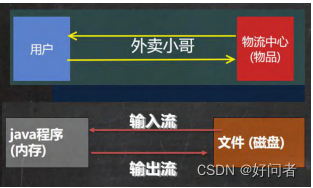
FileInputStream 介绍:
要求
:
请使用
FileInputStream
读取
hello.txt
文件,并将文件内容显示到控制台
.
package com.hspedu.inputstream_;
import org.junit.jupiter.api.Test;
import java.io.FileInputStream;
import java.io.FileNotFoundException;
import java.io.IOException;
/**
* 演示 FileInputStream 的使用(字节输入流 文件--> 程序)
*/
public class FileInputStream_ {
public static void main(String[] args) {
}
/**
* 演示读取文件... * 单个字节的读取,效率比较低
* -> 使用 read(byte[] b)
*/
@Test
public void readFile01() {
String filePath = "e:\\hello.txt";
int readData = 0;
FileInputStream fileInputStream = null;
try {
//创建 FileInputStream 对象,用于读取 文件
fileInputStream = new FileInputStream(filePath);
//从该输入流读取一个字节的数据。 如果没有输入可用,此方法将阻止。
//如果返回-1 , 表示读取完毕
while ((readData = fileInputStream.read()) != -1) {
System.out.print((char)readData);//转成 char 显示
}
} catch (IOException e) {
e.printStackTrace();
} finally {
//关闭文件流,释放资源.
try {
fileInputStream.close();
} catch (IOException e) {
e.printStackTrace();
}
}
}
/**
* 使用 read(byte[] b) 读取文件,提高效率
*/
@Test
public void readFile02() {
String filePath = "e:\\hello.txt";
//字节数组
byte[] buf = new byte[8]; //一次读取 8 个字节. int readLen = 0;
FileInputStream fileInputStream = null;
try {
//创建 FileInputStream 对象,用于读取 文件
fileInputStream = new FileInputStream(filePath);
//从该输入流读取最多 b.length 字节的数据到字节数组。 此方法将阻塞,直到某些输入可用。
//如果返回-1 , 表示读取完毕
//如果读取正常, 返回实际读取的字节数
while ((readLen = fileInputStream.read(buf)) != -1) {
System.out.print(new String(buf, 0, readLen));//显示
}
} catch (IOException e) {
e.printStackTrace();
} finally {
//关闭文件流,释放资源. try {
fileInputStream.close();
} catch (IOException e) {
e.printStackTrace();
}
}
}
}
FileOutputStream 介绍:
要求
:
请使用
FileOutputStream
在
a.txt
文件,中写入 “
hello
,
world
”
. [
老师代码演示
],
如果文件不存在,会创建
文件
(
注意:前提是目录已经存在
.)
package com.hspedu.outputstream_;
import org.junit.jupiter.api.Test;
import java.io.FileNotFoundException;
import java.io.FileOutputStream;
import java.io.IOException;
public class FileOutputStream01 {
public static void main(String[] args) {
}
/**
* 演示使用 FileOutputStream 将数据写到文件中, * 如果该文件不存在,则创建该文件
*/
@Test
public void writeFile() {
//创建 FileOutputStream 对象
String filePath = "e:\\a.txt";
FileOutputStream fileOutputStream = null;
try {
//得到 FileOutputStream 对象 对象
//说明
//1. new FileOutputStream(filePath) 创建方式,当写入内容是,会覆盖原来的内容
//2. new FileOutputStream(filePath, true) 创建方式,当写入内容是,是追加到文件后面
fileOutputStream = new FileOutputStream(filePath, true);
//写入一个字节
//fileOutputStream.write('H');//
//写入字符串
String str = "hsp,world!";
//str.getBytes() 可以把 字符串-> 字节数组
//fileOutputStream.write(str.getBytes());
/*
write(byte[] b, int off, int len) 将 len 字节从位于偏移量 off 的指定字节数组写入此文件输出流
*/
fileOutputStream.write(str.getBytes(), 0, 3);
} catch (IOException e) {
e.printStackTrace();
} finally {
try {
fileOutputStream.close();
} catch (IOException e) {
e.printStackTrace();
}
}
}
}
FileReader 和 FileWriter 介绍:

FileReader
相关方法:
1) new FileReader(File/String)2) read:每次读取单个字符,返回该字符,如果到文件末尾返回-13) read(char[]):批量读取多个字符到数组,返回读取到的字符数,如果到文件末尾返回-1相关APl:1)new String(char[]):将char[]转换成String2)new String(char[],off,len):将char[]的指定部分转换成String
FileWriter
常用方法:
1) new FileWriter(File/String):覆盖模式,相当于流的指针在首端2)new FileWriter(File/String,true):追加模式,相当于流的指针在尾端3)write(int):写入单个字符4)write(char[]):写入指定数组5) write(char[],off,len):写入指定数组的指定部分6)write(string):写入整个字符串7)write(string,off,len):写入字符串的指定部分相关API:String类:toCharArray:将String转换成char[]>注意:FileWriter使用后,必须要关闭(close)或刷新(flush),否则写入不到指定的文件!
节点流和处理流:
1
基本介绍

.2
节点流和处理流一览图

3
节点流和处理流的区别和联系
1.节点流是底层流/低级流,直接跟数据源相接。处理流(包装流)包装节点流,既可以消除不同节点流的实现差异,也可以提供更方2.便的方法来完成输入输出。[源码理解]3.处理流(也叫包装流)对节点流进行包装,使用了修饰器设计模式,不会直接与数据源相连[模拟修饰器设计模式=》小伙伴就会非常清楚.]
4
处理流的功能主要体现在以下两个方面
:
1.性能的提高:主要以增加缓冲的方式来提高输入输出的效率。2.操作的便捷:处理流可能提供了一系列便捷的方法来一次输入输出大批量的数据,使用更加灵活方便
处理流
-BufferedReader
和
BufferedWriter:
BufferedReader和BufferedWriter属于字符流,是按照字符来读取数据的关闭时处理流,只需要关闭外层流即可[后面看源码】
package com.hspedu.reader_;
import java.io.BufferedReader;
import java.io.FileReader;
/**
* 演示 bufferedReader 使用
*/
public class BufferedReader_ {
public static void main(String[] args) throws Exception {
String filePath = "e:\\a.java";
//创建 bufferedReader
BufferedReader bufferedReader = new BufferedReader(new FileReader(filePath));
//读取
String line; //按行读取, 效率高
//说明
//1. bufferedReader.readLine() 是按行读取文件
//2. 当返回 null 时,表示文件读取完毕
while ((line = bufferedReader.readLine()) != null) {
System.out.println(line);
}
//关闭流, 这里注意,只需要关闭 BufferedReader ,因为底层会自动的去关闭 节点流
//FileReader。
/*
public void close() throws IOException {
synchronized (lock) {
if (in == null)
return;
try {
in.close();//in 就是我们传入的 new FileReader(filePath), 关闭了. } finally {
in = null;
cb = null;
}
}
}
*/
bufferedReader.close();
}
}
处理流-BufferedInputStream 和 BufferedOutputStream:

介绍
BufferedOutputStream:

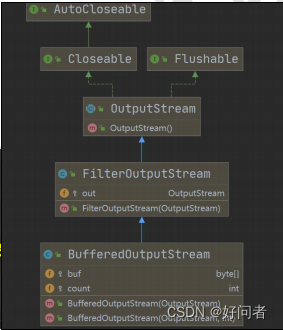
对象流-ObjectInputStream 和 ObjectOutputStream:
看一个需求1.将int num=100这个int数据保存到文件中,注意不是100数字,而是int 100,并且,能够从文件中直接恢复int 1002.将Dog dog= new Dog(“小黄”,3)这个dog对象保存到文件中,并且能够从文件恢复'3.上面的要求,就是能够将 基本数据类型或者对象进行序列化和反序列化操作序列化和反序列化1.序列化就是在保存数据时,保存数据的值和数据类型2.反序列化就是在恢复数据时,恢复数据的值和数据类型3.需要让某个对象支持序列化机制,则必须让其类是可序列化的,为了让某个类是可序列化的,该类必须实现如下两个接口之一:Serializable // 这是一个标记接口,没有方法Externalizable//该接口有方法需要实现,因此我们一般实现上面的 Serializable接口
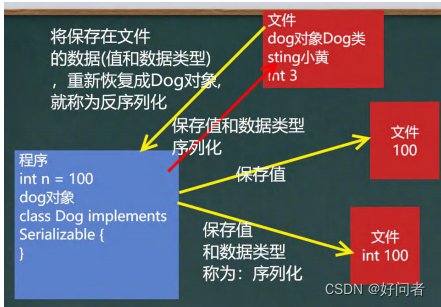
对象流介绍
功能:提供了对基本类型或对象类型的序列化和反序列化的方法
ObjectOutputStream
提供 序列化功能
ObjectInputStream
提供 反序列化功能

注意事项和细节说明1)读写顺序要一致2)要求序列化或反序列化对象,需要实现 Serializable3)序列化的类中建议添加SerialVersionUID,为了提高版本的兼容性4)序列化对象时,默认将里面所有属性都进行序列化,但除了static或transient修饰的成员5)序列化对象时,要求里面属性的类型也需要实现序列化接口6)序列化具备可继承性,也就是如果某类已经实现了序列化,则它的所有子类也已经默认实现了序列化
标准输入输出流:

转换流-InputStreamReader 和 OutputStreamWriter
介绍1.InputStreamReader:Reader的子类,可以将InputStream(字节流)包装成(转换)Reader(字符流)2.OutputStreamWriter:Writer的子类,实现将OutputStream(字节流)包装成Writer(字符流)3.当处理纯文本数据时,如果使用字符流效率更高,并且可以有效解决中文问题,所以建议将字节流转换成字符流4.可以在使用时指定编码格式(比如utf-8,gbk,gb2312,ISO8859-1等)
打印流-PrintStream 和 PrintWriter


Properties 类:
1.
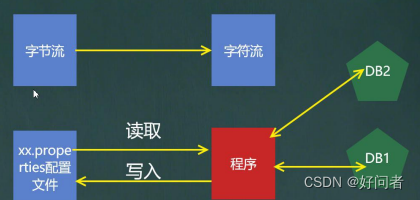
package com.hspedu.properties_;
import java.io.BufferedReader;
import java.io.FileNotFoundException;
import java.io.FileReader;
import java.io.IOException;
public class Properties01 {
public static void main(String[] args) throws IOException {
//读取 mysql.properties 文件,并得到 ip, user 和 pwd
BufferedReader br = new BufferedReader(new FileReader("src\\mysql.properties"));
String line = "";
while ((line = br.readLine()) != null) { //循环读取
String[] split = line.split("=");
//如果我们要求指定的 ip 值
if("ip".equals(split[0])) {
System.out.println(split[0] + "值是: " + split[1]);
}
}
br.close();
}
}
2
基本介绍
1)专门用于读写配置文件的集合类配置文件的格式:键=值键=值2)注意:键值对不需要有空格,值不需要用引号一起来。默认类型是String3)Properties的常见方法load:加载配置文件的键值对到Properties对象list:将数据显示到指定设备getProperty(key):根据键获取值setProperty(key,value):设置键值对到Properties对象store:将Properties中的键值对存储到配置文件,在idea 中,保存信息到配置文件,如果含有中文,会存储为unicode码http://tool.chinaz.com/tools/unicode.aspx unicode码查询工具
